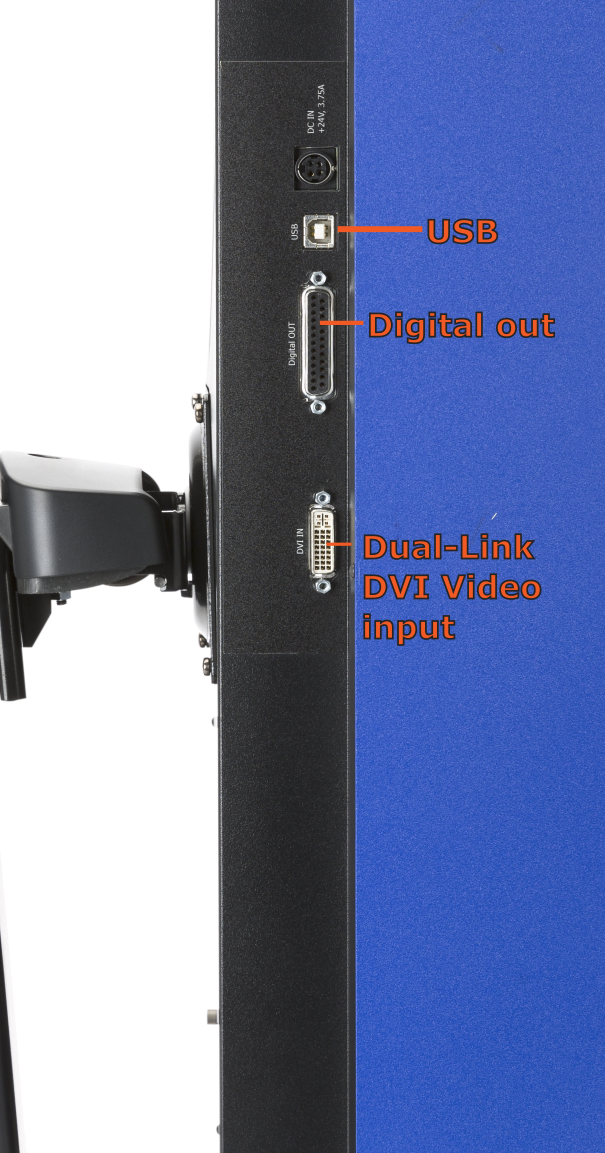Our VIEWPixx displays are more than just a screen. They also have built in hardware for data synchronization. In this section, we will cover some of these features in detail.
Zero image processing and deterministic video signal
All of our monitors receive Dual-Link DVI video from your computer’s graphics card.
Remember the vertical sync pulse from our description of CRT raster scans? This signal exists in digital DVI video protocols for LCDs as well. When a full frame of video data is received by your monitor, a vertical sync pulse immediately follows. At 120 Hz, our monitors do not hold frames in a buffer; instead, they are passed immediately to the display. This means that the time between when this pulse is received and when the screen illuminates is fully deterministic. That is, using the vsync pulse we can determine with microsecond precision when an image appears on your display.
When the scanning backlight is enabled. The time between the vertical sync pulse and the stabilization of the top left pixel of the display is exactly 6 milliseconds.

Our hardware can be programmed such that the vertical sync pulse also acts as a triggering event for outgoing signals. On the VIEWPixx /EEG, this triggering is driven exclusively by Pixel Mode.
The VIEWPixx /3D can be configured to send custom triggers on digital, analog or audio channels. The vertical sync pulse can also be marked on the onboard system clock and used to relate incoming data (e.g., from a button box or recording system) to the onset of visual stimuli.
I/O Connections: Full vs. Lite systems
As of September 2023, all units sold by VPixx Technologies are equipped with the “Full” data acquisition system. If you would like to upgrade a legacy Lite system, please contact sales@vpixx.com with your product serial code for pricing and details.
The VIEWPixx /3D comes with a full onboard I/O hub similar to the DATAPixx3. The Lite version offers digital input and output on two DB25 ports. There is also a VESA standard 3D port for use with an infrared emitter and active 3D shutter glasses.
The Full version of the VIEWPixx /3D includes all of the features of the Lite system, and enables analog I/O on a third DB25 port (4 channels digital to analog, 16 channels analog to digital). The Full system also includes audio in, microphone in and audio out on three 25 mm jacks.
The VIEWPixx /EEG has digital out capabilities on a single DB25 connector. This connector drives digital output exclusively via Pixel Mode.


Console monitor output
The VIEWPixx /3D has a secondary Dual-Link DVI output, capable of sending a copy of the video signal to an optional second console monitor. This monitor can be used by the experimenter to observe participant progress during data collection.
Importantly, video signal duplication happens after the video has left your computer’s graphics card, meaning you are not compromising display timing by placing extra demand on your graphics engine to extend the test display.
MATLAB/Psychtoolbox and Python support
The synchronization and data acquisition features of the VIEWPixx /3D can be accessed in MATLAB/Psychtoolbox and your Python IDE of choice, using our VPixx Software Tools.
For a more detailed explanation of the VIEWPixx /3D’s synchronization and data acquisition features, please check out The Logic of VPixx Hardware Control